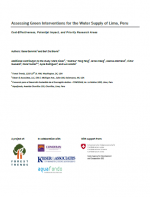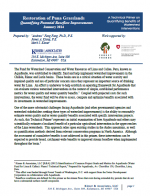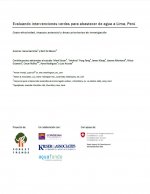Assessing Green Interventions for the Water Supply of Lima, Peru
Cost-Effectiveness, Potential Impact, and Priority Research Areas
By Gena Gammie (Forest Trends), Bert De Bievre (CONDESAN) View PublicationLima, Peru is the second-largest desert city in the world. It stands out among major cities in Latin America and the world in the severity of the water stress faced by its approximately 9 million residents. Substantial water quality and quantity challenges threaten the continued economic growth of the city and Peru at large.
While substantial built, or “gray,” infrastructure projects have been planned and implemented to address this crisis, “green interventions,” or improvements in land use, have not yet been rigorously considered as a part of the solution. This study aims to lay the groundwork to integrate these options by assessing the cost-effectiveness and potential impact of several green interventions in Lima’s watersheds. The specific projects assessed were selected based on their ability to potentially improve dry season flows and likelihood of implementation.
This study assessed four such interventions in terms of cost and potential to improve dry season baseflows, namely: animal exclusion from overgrazed puna grasslands, introduction of rotational grazing practices on currently overgrazed puna grasslands, hydrological restoration of drained wetlands, and restoration of ancient infiltration infrastructure (amunas).



